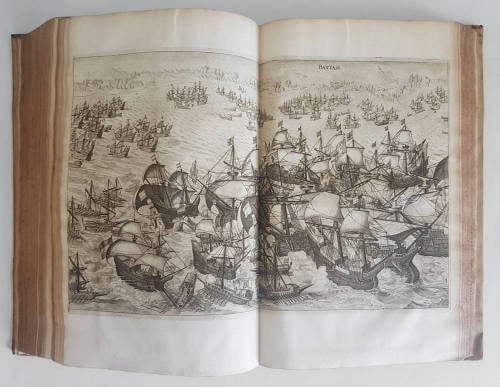Leen Helmink Antique Maps
Old books, maps and prints by Jan Janszoon Orlers
Jan Janszoon Orlers (1570-1646)
Jan Janszoon Orlers was a prominent Dutch author, historian, and civic official during the Dutch Golden Age. Born in Leiden in 1570, Orlers lived through a transformative period in Dutch history, marked by the Dutch Republic’s fight for independence from Spanish rule and its rise as a global cultural and economic power. He is best remembered for his historical and biographical writings, which provide valuable insights into the society and key figures of his time.
Orlers was deeply involved in the civic life of Leiden, serving as burgomaster (mayor) and holding various other municipal positions throughout his career. He was also an active participant in the city’s cultural and intellectual activities, which flourished during the era. His role as a civic leader intertwined with his work as a writer, as he sought to document and celebrate the achievements of the Dutch Republic and its citizens.
Among Orlers’ notable works was Wilhelm en Maurits van Nassau, Princen van Orangien, Haer Leven en Bedrijf (Lives and Deeds of William and Maurice of Nassau, Princes of Orange), a biographical account of the leadership of William the Silent and his son Maurice during the Eighty Years’ War. Published in 1610, the work highlighted the contributions of the House of Orange-Nassau in the Dutch struggle for independence. It combined historical narrative with a patriotic celebration of their military and political successes, reinforcing their status as key figures in the Dutch Golden Age.
Orlers also wrote Beschrijvingen der Stad Leyden (Descriptions of the City of Leiden), published in 1614, which chronicled the history, architecture, and notable citizens of Leiden. His 1641 edition of Beschrijvinge der Stadt Leyden included biographical sketches of significant figures, such as Rembrandt van Rijn, providing some of the earliest records of the renowned artist’s life. These works not only reflected Orlers’ civic pride but also served as valuable historical sources.
Jan Janszoon Orlers passed away in 1646, leaving behind a legacy as a chronicler of Dutch Renaissance life. His works, blending civic pride and historical narrative, remain important records of the Dutch Republic’s cultural and political achievements during one of its most dynamic eras.
